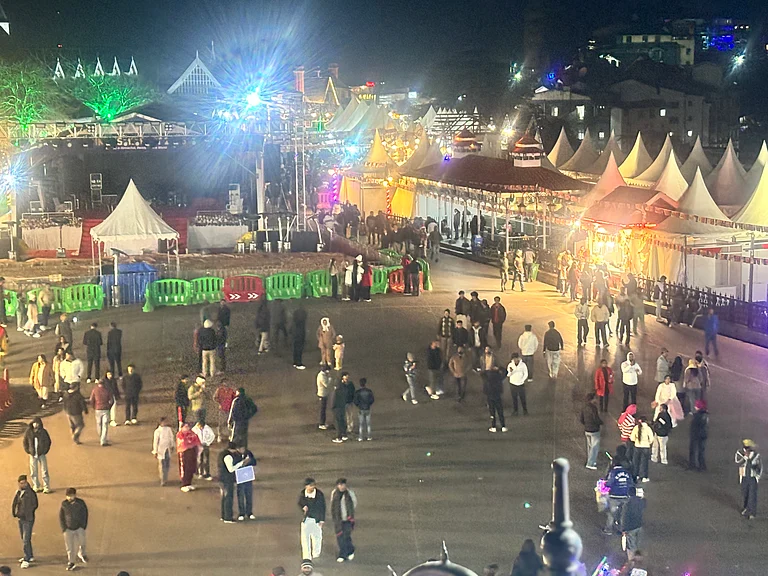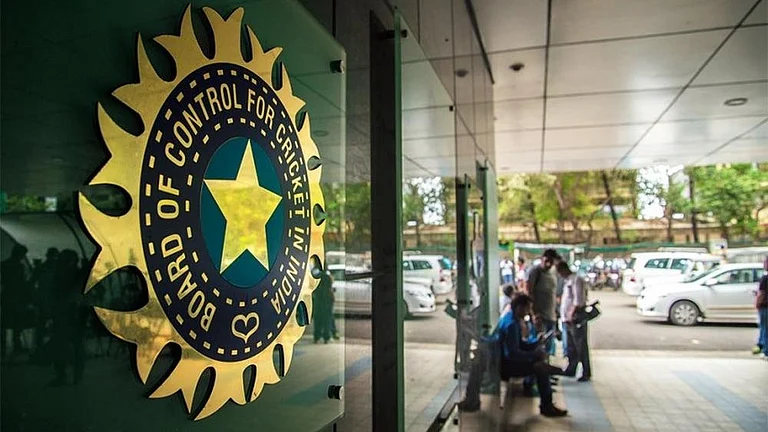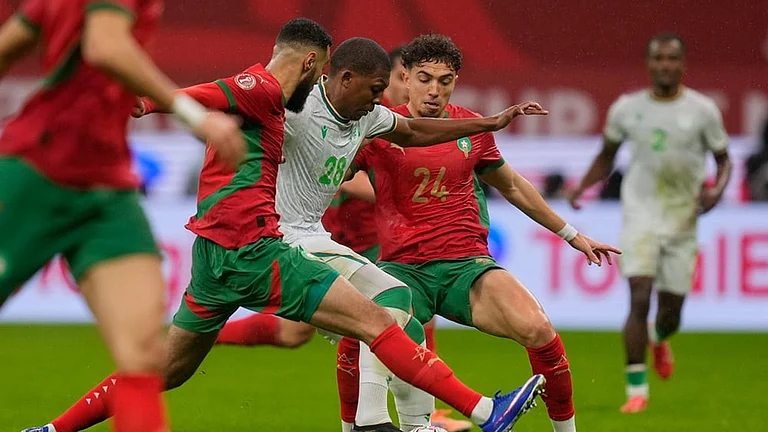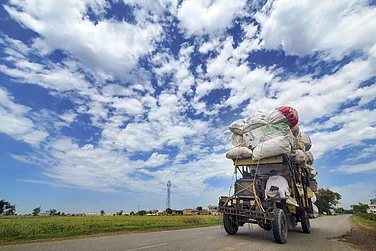Between 1933 and 1944, when the US was in the throes of the Great Depression, the then president, Franklin D Roosevelt, anchored the Fireside Chats, a series of remarkably popular, informal radio addresses broadcast during evening time. Deliberately written in simple, colloquial English, each episode was meant to break down concepts such as the economic crisis, banking reforms, the New Deal and the war against fascism, to name a few, to the general American public. In his 4422-day presidency, Roosevelt delivered just 31 addresses but is remembered as one of “the most effective communicators in radio history.”
Perhaps picking a leaf out of FDR’s book, Prime Minister Narendra Modi, in October 2014, began addressing the nation on Mann Ki Baat—a monthly radio address with the stated aim of establishing “a dialogue with the citizens on issues of day-to-day governance.” The programme recently celebrated 100 episodes, to commemorate which 13 artists of international repute put together the ‘Jan Shakti Art Exhibition’ at the National Gallery of Modern Art (NGMA), showcasing artworks created around the pet themes of the Mann Ki Baat programme such as ‘Nari Shakti’ (women power), yoga, sanitation, water conservation, Ayurveda, space science and India’s relations with the world.
Predictably, the exhibition ran into controversy, with outraged artists naming and shaming the participating artists for lending legitimacy to what they alleged was a ‘propagandist’ radio programme. Artist and researcher Sandip K Luis, in a Facebook post, even called it “an instance of compromise,” warning his readers of a future where the artworld would function as an oligarchy where, in a twisted version of Schindler’s List, the artist would look toward a Tata or a Nadar or an Ambani to save him or her from an upcoming (cultural) genocide. Incidentally, Kiran Nadar is the adviser to the ongoing exhibition, and not too long ago, the Ambanis, too, formally entered the artworld by inaugurating the colossal Nita Mukesh Ambani Cultural Centre (NMACC) in Mumbai, an event that saw the attendance of some of the biggest names in global art, cinema and fashion—as well as Hindu ascetics.

Referring to the works on display at ‘Jan Shakti,’ visual artist Vikrant Bhise, whose works on caste-based discrimination regularly unpack social cleavages, argues that nobody present was showing the “black side” of India. “Who is showing what is currently happening in the country?” asks Bhise, referring to the ongoing protests of the wrestlers against the alleged sexual harassment by BJP MP Brij Bhushan Singh. He also asks if the artists are actually taking stands on real issues that matter to the people.
The artists involved in ‘Jan Shakti’ are ‘big names’ indeed. Atul Dodiya, Vibha Galhotra, Riyas Komu, Ashim Purkayastha, GR Iranna, Thukral and Tagra, Manjunath Kamath and Jagannath Panda are no small fry. It is important, then, to unpack the issues involved in the politics of art—who gets to represent what?—by understanding what was on display and why.
Riyas Komu’s work at ‘Jan Shakti’, for instance, brings in Gandhi, Ambedkar, motherhood and the Mohenjodaro Dancing Girl together in one frame. Komu uses two wooden legs standing robustly on a structure to portray Gandhi’s Dandi march. With different metaphors like the round-framed spectacles of Gandhi to the wooden blocks that contain faces of Ambedkar, Guru Nanak and Sri Narayan Guru, among others—the artwork, he claims, interweaves caste, cleanliness and discrimination. The Dancing Girl stands on the wooden blocks that are embossed with the word ‘mother’ in different vernacular languages. In the words of Komu, “Art is a space to archive contemporary times.”
But how much of Komu’s artwork (oddly titled A Art) actually speaks to our times? Although issues of caste and sanitation are significant to contemporary Indian politics, a visual artist, on the condition of anonymity, points out that manual scavengers—mostly Dalits—are dying every day while working without any safety gear. So, if Komu wanted to highlight the issue, he argues, he could have done it directly, instead of bringing in disparate elements in one frame.
Discussing the import of such artworks, Sandip K Luis argues that touching upon socially relevant issues while leaving the overall content and nature of the work neutral and open to multiple or even mutually contradictory interpretations is “a familiar strategy that contemporary artists often adopt in their attempt to appear ‘socially relevant.’” Luis nevertheless notes that such open-endedness of artworks and its appropriation by right-wing was never as imminent a threat as it is today. “As Hindutva forces get more sophisticated in their operation by seizing state power and governmental institutions, the situation is different. They seem to have realised that it is more productive to co-opt the apparent neutrality of artworks to propagandist ends,” he adds.

The politics of ecology and cleanliness also found an ally in Vibha Galhotra’s works that focus on water conservation and show how water resources have been contaminated due to extensive industrial and other forms of pollution. On display is a canvas smeared with sediments from the Yamuna that were collected from the river, meant to give the audience a reality check, perhaps. Her works, both in metaphor and in their constituents, permeate silence—where the stagnant water contradicts the very nature of its ‘flow’—ironically, the title of her artwork. Galhotra uses ghungru (ankle bells) to portray the meandering river that reacts differently to different urban residues and unsettled sediments.
Also on display was G R Iranna’s Kalpataru, a depiction of the mythological wish-fulfilling tree, painted using acrylics on tarpaulin. Red-coloured holy threads were tied to the branches of the tree, to represent a gamut of emotions. Explaining the context for his works, the artist says, “Among every religion, region and community, you can see there are traditions of nature-worshipping. People adorn trees in different clothes, sometimes a dhoti, a saree etc. So, when I thought of connecting to people through art, I wanted to represent emotions through the tree.”
But how much of an impact has Mann ki Baat had on the artworks on display? To which Iranna responds, “It is not only our PM, rather, most of the global leaders are now concerned about global warming and the environmental health. The PM even spoke about it in one of the episodes of Mann Ki Baat.” In terms of the impact of the radio show itself, there seem to be contrasting views of its popularity, with a recent study by the Centre for the Study of Developing Societies (CSDS) titled ‘Media in India: Access, Practices, Concerns and Effects’ finding that three-fifths of the Indian population had never heard of the show. And the show goes on.
Held at the Jaipur House of the NGMA, the ‘Jan Shakti Art Exhibition’, guest-curated by Alka Pande, went on until the 30 of May, with the PM shining bright by making an appearance at the event and posing for a photograph with all the contributing artists. In the shadow cast by Mann Ki Baat and the controversies surrounding its figurehead, did the artworks lose their sheen? More importantly, do the artists care?
(Edited by Ramya Maddali)
(This appeared in the print as 'In The Shadow Of Mann Ki Baat')



























